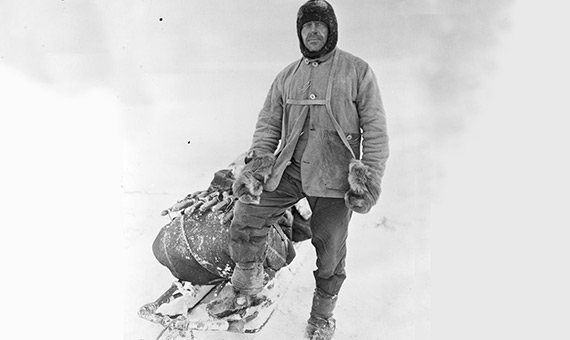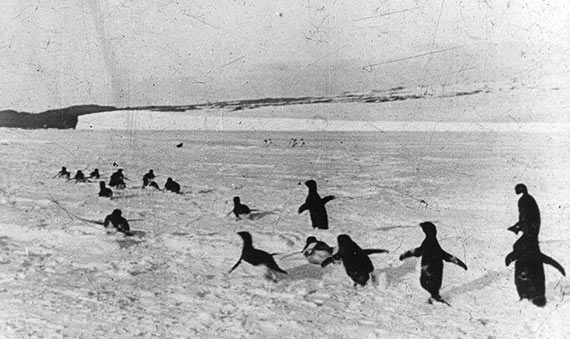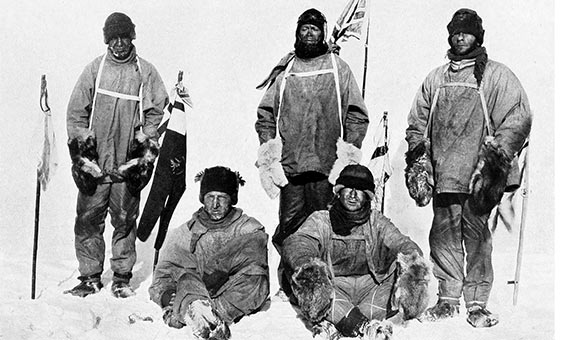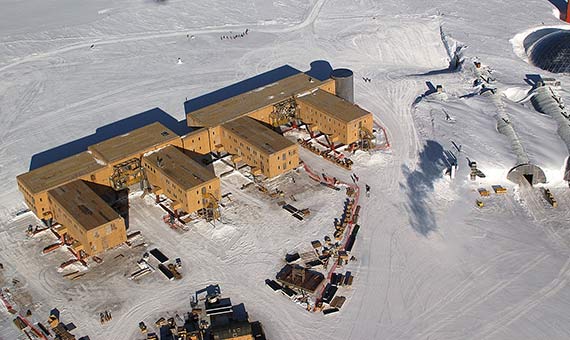It was his second expedition to Antarctica, but this time he just had to conquer the geographic South Pole for the first time in history and fix the British flag there. On 17 January 1912, Robert Falcon Scott reached his destination with four of his men. There they discovered that they had not been the first to arrive. In a show of strategy and good planning, the Norwegian explorer Roald Amundsen had reached the South Pole five weeks earlier. That was a defeat, but in reality Scott’s journey was much more than just a race and he brought to the story outstanding scientific discoveries.
On the morning of 24 October 1911, Robert Scott (1868-1912) set out for the South Pole, an expedition from which he would never return. The great British explorer was facing more than 1400 kilometres of ice accompanied by strong winds, huge glaciers, immense fissures and average temperatures of −40 °C. It was a feat comparable to climbing Everest, but horizontally and much longer, requiring at least a couple of years of preparation before tackling the objective.

But if anything differentiated Scott’s expedition from Amundsen’s, it is that his had a markedly scientific character. They were prepared to collect specimens, film animals and make meteorological measurements. They were so committed to the scientific programme that during the harsh Antarctic winter of 1911, three members of the expedition travelled around 100 kilometres to reach a colony of emperor penguins and collect some of their unknown eggs. Upon their return, Scott wrote: “The group returned last night after enduring for five weeks the worst travel conditions in history. I’ve never seen anyone so battered. Their faces were scarred and wrinkled, their eyes were dull, their hands were white and wrinkled…”
Never-before-seen images of polar animals
In addition to fossils, drawings and photographs, the Terra Nova—the ship that transported the British team to Antarctica—returned with never-before-seen images of polar animals in action. It was the first time that a film camera was used to make discoveries in the field of biology, laying the foundations for future documentaries about wildlife. The filming of Weddell seals opening gaps in the ice with their canines overturned the theories of the time on how these animals created air holes to breathe.

After failing to be the first to conquer the South Pole, Scott and his companions (Edward Wilson, Lawrence Oates, Henry Bowers and Edgar Evans) dejectedly turned round, but they continued with the scientific mission. On the way back, the five expedition members deviated from their route. Food was scarce and the weather was getting worse but they had the idea in mind to collect some more fossils. A new theory said that Antarctica was joined in the past to a supercontinent with a climate so warm that trees would grow. To prove this, they only needed to find the same fossil of Glossopteris, a plant from 250 million years ago that had already turned up in Australia, Africa and South America. In this they would succeed. Perhaps it was the last discovery they made consciously. Soon after they would all die.
The final notes

The first to die was Evans after suffering a head injury in a hard fall during the descent of a glacier. The second to go was Oates. Aware that he was a burden on the rest of the team because he had a frozen foot and gangrene, on the morning of 17 March 1912, the day he turned 32, he left the tent after saying, “I am just going outside and may be some time.” The remaining three members, after walking about 30 kilometres more, pitched their last camp on March 19. Ten days later Scott made his final notes: “It seems a pity, but I do not think I can write more. R. Scott. Last entry. For God’s sake look after our people.” In the tent where the three frozen bodies of Wilson, Bowers and Scott were found, there were about 15 kilograms of fossils, among them that of the Glossopteris plant, a meteorological diary, notes and rolls of film taken by Scott himself.

Today, the station closest to the South Pole, the Amundsen-Scott Base, reminds us that the Norwegian was the first to reach the South Pole and the Briton the first to reveal Antarctica to us.
Bibiana García
Comments on this publication